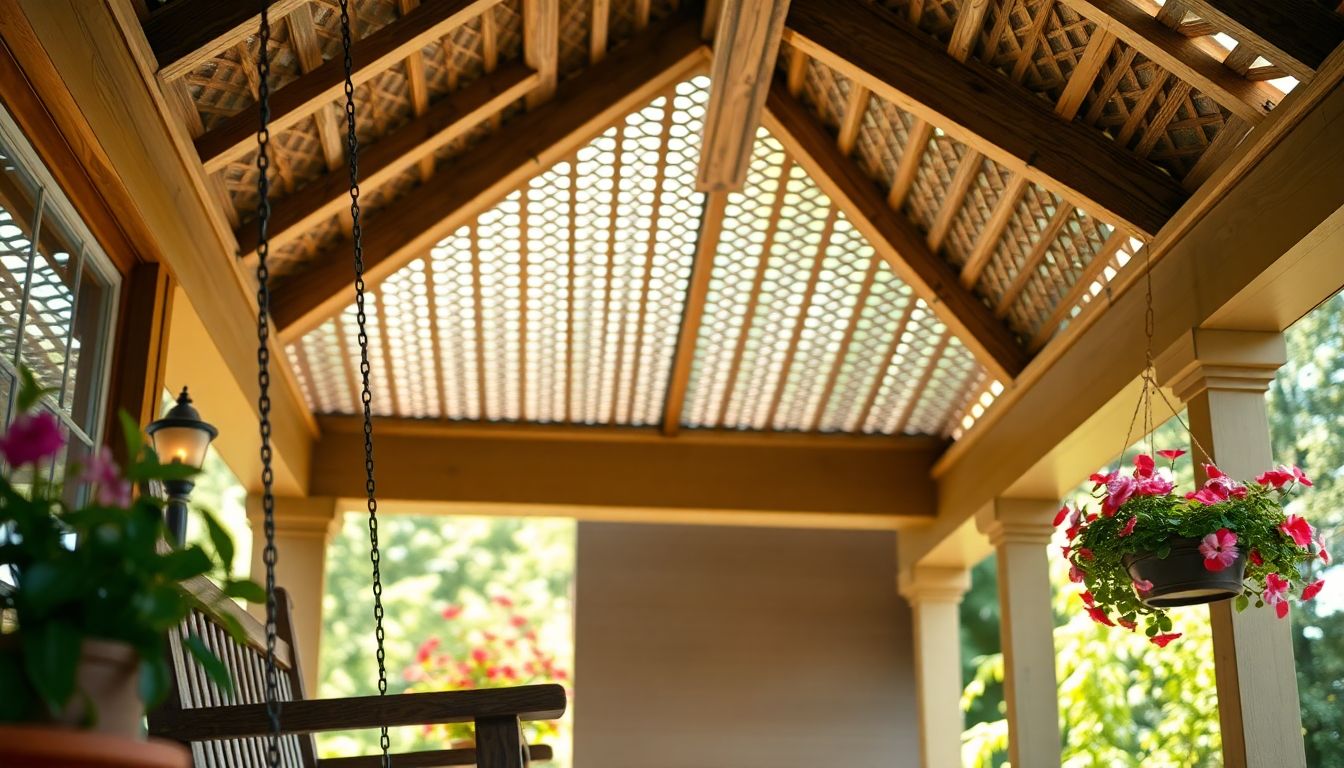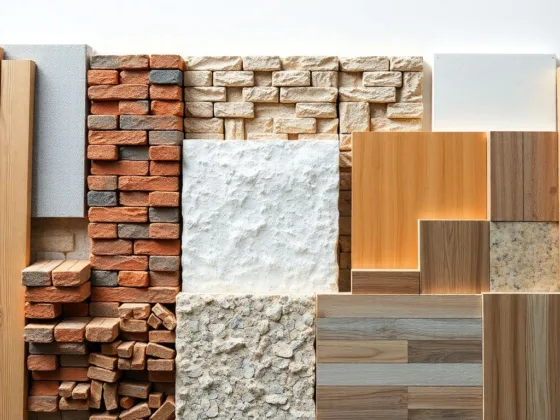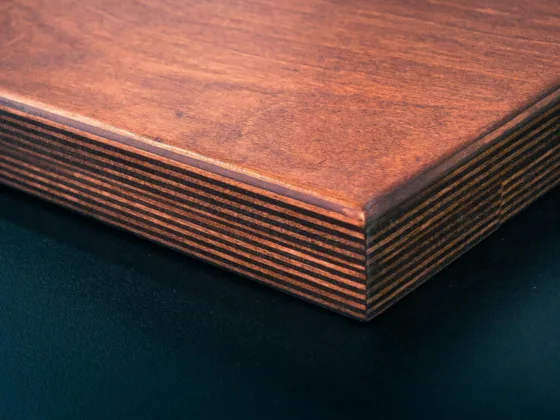Table of Contents Show
Porch renovations have surged in popularity, with over 70% of homeowners upgrading their outdoor spaces in the past year. The porch serves as a bridge between your interior and exterior, enhancing both curb appeal and property value. Focusing on porch ceiling design can truly transform this often-overlooked area into a vibrant part of your home’s charm.

Understanding Porch Ceiling Design Basics
Understanding Your Porch Style
To choose the right ceiling design, first analyze your home’s architectural features. A traditional home may benefit from classic beadboard, while contemporary styles might lean towards sleek metal or painted finishes.
Material Selection
Selecting the right material is crucial for durability and aesthetics. Here are some popular options:
- Wood: Offers a warm, rustic feel; common choices include cedar and pine.
- Metal: Ideal for modern styles; consider aluminum or galvanized steel.
- Composite: Low-maintenance and weather-resistant; look into PVC or fiberglass options.
Budget Considerations
Costs vary widely based on materials and installation choices.
- DIY wood ceiling: $1.50 – $3.50 per square foot.
- Metal options: $3 – $5 per square foot.
- Composite ceilings: $2 – $4 per square foot.
Factor in additional costs for installation if hiring a professional.
RELATED: Porch vs. Patio: What’s the Perfect Home Addition?
Painting and Color Schemes for Porch Ceilings
Color Psychology and Porch Design
Colors influence mood significantly. Bright white can create an open feel, while soft blues can evoke tranquility. Consider these combinations:
- Light Gray: Adds elegance without being too stark.
- Pale Yellow: Infuses warmth and cheer.
- Seafoam Green: Brings a touch of nature inside.
Paint Finishes
Different paint finishes serve various purposes:
- Matte: Hides imperfections but may stain easily.
- Satin: Offers a soft sheen and easier clean-up.
- Eggshell: Balances durability with a subtle shine.
- Gloss: Highly reflective and easy to wash but may highlight surface flaws.
Practical Tips for Painting a Porch Ceiling
- Clean the surface thoroughly to ensure paint adheres properly.
- Use painter’s tape to safeguard edges and trim.
- Choose the right weather for painting; dry, mild conditions are best.
- Apply a primer for better color coverage.
Adding Texture and Dimension
Beamed Ceilings
Beams can add significant character. Consider using:
- Exposed beams: Great for rustic homes.
- Recessed beams: Offers a sleek look in modern designs.
Shiplap and Wainscoting
Both options add depth and texture. Shiplap can create a cozy vibe, while wainscoting provides a classic touch. Find inspiration with images showcasing these designs.
Using Stencils and Decorative Moldings
Customization is key. Use stencils to create designs like florals or geometric patterns. Decorative moldings can frame your ceiling beautifully, making the space feel more polished.
RELATED: Custom Deck Design and Porch Addition
Incorporating Lighting for Ambiance
Ambient Lighting Options
Choose from various fixtures to elevate your porch vibe:
- Pendant lights: Stylish and functional.
- Chandeliers: Adds elegance.
- Recessed lighting: Creates a clean look.
Accent Lighting Techniques
Strategically place lights to highlight architectural features like beams or moldings. You might select uplighting for a stunning silhouette effect.
Energy-Efficient Lighting Choices
Energy-efficient bulbs save power and last longer. Look into LED fixtures designed for outdoor use, which enhance safety without breaking the bank.
Natural Elements and Greenery
Creating a Greenery Canopy
Incorporate plants like:
- Hanging ferns: Adds color and softness.
- Vines: Create a lush backdrop.
- Potted flowers: Brighten the space.
Incorporating Natural Materials
Use natural materials like bamboo or rattan for fans or light fixtures, blending indoor and outdoor elements seamlessly.
Maintaining a Clean and Inviting Space
Regularly check plants for pests, clean fixtures to prevent mildew, and remove fallen leaves to keep the space welcoming.
DIY vs. Professional Installation
Assessing Your DIY Skills
Evaluate if you have the skills and tools needed for the project. Simpler tasks like painting might be manageable, while complex installations may require help.
Finding Qualified Contractors
Seek recommendations from friends or use online reviews to find reputable contractors. Ensure they have experience with porch projects.
Cost Comparison
Understand the financial implications:
- DIY projects: Typically save on labor but may require a time investment.
- Professional help: Costs range from $40 to $100 per hour depending on the complexity of the job.
RELATED: Lanai vs. Patio: What’s the Difference?
Conclusion
Transforming your porch ceiling opens up a world of design possibilities. From color choices to incorporating natural elements, each aspect significantly enhances your home’s appeal. Start planning your porch ceiling makeover and enjoy the vibrant new atmosphere.
FAQs
You have several options! Wood gives a warm and rustic feel, while metal is great for modern styles. Composite materials, like PVC or fiberglass, are low-maintenance and weather-resistant. Choose based on your aesthetic preference and durability needs!
Consider how colors influence mood! Bright white creates an open feel, soft blues evoke tranquility, and light gray adds elegance. Think about combinations, like pale yellow for warmth or seafoam green for a touch of nature. Your choice can really set the tone for your outdoor space!
You can elevate your porch vibe with stylish pendant lights or elegant chandeliers. Recessed lighting offers a clean look, while accent lighting can highlight architectural features like beams or moldings. Just remember to consider energy-efficient options to save on power!
It depends on your skills! If you’re comfortable with simpler tasks like painting, go for it. However, complex installations might be best left to professionals. DIY projects can save on labor costs, but remember to factor in your time and the tools needed!
Consider incorporating beamed ceilings—exposed beams offer a rustic touch, while recessed beams create a sleek look. Shiplap and wainscoting also add depth. You can even use stencils or decorative moldings for a custom finish that really stands out!
Regular upkeep is key! Check your plants for pests, clean fixtures to prevent mildew, and remove any fallen leaves. Keeping the space tidy will ensure it remains welcoming and enjoyable for you and your guests!










